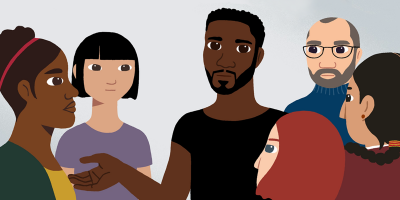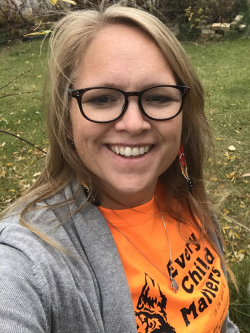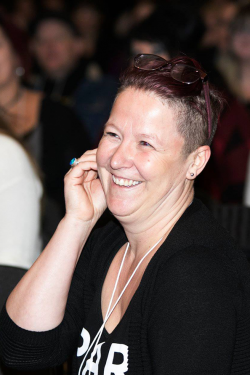Bridging a gap: Foundational harm reduction education for frontline workers

For many years, CATIE has promoted the importance of harm reduction as a strategy to prevent HIV and hepatitis C among people who use drugs. Through our work, we have developed strong partnerships with harm reduction service providers, educators and advocates. More recently, we have responded to the needs of our partners by expanding the scope of our harm reduction information and education work to cover harm reduction and the health and rights of people who use drugs more broadly.
Canada has been in the middle of a crisis affecting people who use drugs since at least 2016, with unprecedented rates of drug overdose largely driven by a poisoned drug supply, stigma and bad drug laws and policies. The drug poisoning crisis continues today and has been worsened and compounded by the COVID-19 pandemic. Over the last two years, COVID-19 has affected people who use drugs in many ways: limiting their ability to access services, increasing the toxicity of the illicit drug supply, and exacerbating the level of grief, loss and burnout already felt by workers providing health and social services to people who use drugs. Organizations that were already stretched thin have had their capacity to deliver harm reduction training even more limited.
Faced with these ongoing health emergencies and an overwhelmed harm reduction workforce, our partners have identified a need for comprehensive harm reduction education relevant to frontline health and social service workers of all kinds across Canada, to help them provide services to people who use drugs grounded in the principles of harm reduction.
To help support the harm reduction sector’s education and capacity building, CATIE has launched an online, bilingual educational resource called Harm Reduction Fundamentals: A Toolkit for Service Providers. This was developed in partnership with a pan-Canadian working group of organizations and individuals with expertise in harm reduction. This toolkit is a collection of resources and information on core harm reduction knowledge for service providers working with people who use drugs, such as support workers, outreach workers, nurses and workers with lived and living experience. The aim of the toolkit is to help bridge the gap in foundational harm reduction education for new frontline workers and to support harm reduction organizations in their efforts to build capacity in the sector more broadly.
We spoke to three partners who helped develop this toolkit, to hear more about their perspectives on this resource.
Shohan Illsley, executive director, Manitoba Harm Reduction Network (MHRN)
 At the MHRN, we provide harm reduction training throughout the province of Manitoba. The demand for harm reduction training in Manitoba is extensive and we do not have the capacity to meet the increasing demand. Access to an online educational toolkit will greatly support training in the province. It will allow us to direct organizations and individuals to a comprehensive resource for their training needs.
At the MHRN, we provide harm reduction training throughout the province of Manitoba. The demand for harm reduction training in Manitoba is extensive and we do not have the capacity to meet the increasing demand. Access to an online educational toolkit will greatly support training in the province. It will allow us to direct organizations and individuals to a comprehensive resource for their training needs.
The toolkit will be useful for onboarding new staff in community-based organizations and healthcare settings accessed by people who use drugs. Having training on the principles of harm reduction benefits frontline workers because many are new to working from a harm reduction model. It’s also important for service providers to have a critical understanding of the war on drugs and colonial and structural harms, so that they start to question what we have been indoctrinated to believe about substance use and people who use drugs.
Access to an online educational toolkit will greatly support training in the province.
One topic that was important to MHRN to address through the toolkit is Indigenous harm reduction, which is an evidence-informed approach to addressing colonial and structural violence. It is important to understand that Indigenous communities have been trauma-informed and practising harm reduction since colonization began on these lands.
Paul Choisil, Professionals for Ethical Engagement of Peers (PEEP), B.C. Centre for Disease Control Harm Reduction Services
 Two of the key educational needs among frontline workers is learning about trauma and how to support people who use drugs while avoiding stigma. For people working in harm reduction, talking about trauma helps dismantle stigma and better engage with people who use substances.
Two of the key educational needs among frontline workers is learning about trauma and how to support people who use drugs while avoiding stigma. For people working in harm reduction, talking about trauma helps dismantle stigma and better engage with people who use substances.
The toolkit helps convey that harm reduction is not just about supplies, it’s about making a connection with the person in front of you. It’s about providing support without having an agenda for that person. People won’t access services if they get dirty looks or experience stigma. They’ll refuse to come back.
Sometimes in healthcare there’s more emphasis on the health and less on the care. But harm reduction is about caring. That comes through in the toolkit and it will help to educate people and challenge stigma. The toolkit can help reduce the harm that can happen in health service settings, where there can be lots of judgment going on.
Harm reduction is about caring. That comes through in the toolkit and it will help to educate people and challenge stigma.
I think that this toolkit is for everyone. Everyone can find places where it overlaps with their work, where they have something to learn. The harm reduction philosophy is not just for people who use substances, it can apply to any clients. It’s how you treat people, how you talk to people. The language that you use matters and the way you say things determines how a person will react to things.
Even for people who have experience with substance use, there are always things to learn. People may have been working in harm reduction for a year or two but may not be aware of everything. A resource like this can bring everybody on the same page, providing a baseline of understanding that can then be built upon.
Julie-Soleil Meeson, manager of content and practice actualization, Association des intervenants en dépendance du Québec (AIDQ)
 People who work or interact with people who use drugs have many different educational needs. They all come from different backgrounds, academic studies or experiences. Everyone can benefit from continuing education and training on different topics related to the complex issues that people who use drugs live with. There are many amazing tools, videos and resources found in the toolkit that can be useful for frontline workers. It’s also full of important questions to reflect on as people who work with people who use drugs.
People who work or interact with people who use drugs have many different educational needs. They all come from different backgrounds, academic studies or experiences. Everyone can benefit from continuing education and training on different topics related to the complex issues that people who use drugs live with. There are many amazing tools, videos and resources found in the toolkit that can be useful for frontline workers. It’s also full of important questions to reflect on as people who work with people who use drugs.
I hope the toolkit will help encourage the normalization of substance use and will improve people’s understanding that substance use can benefit people too.
I think that many important topics are covered in the toolkit including the history of prohibition and how prohibition and criminalization create harms for people who use drugs. Equally important is how substance use is framed in a positive way and how the benefits of substance use are acknowledged. I hope the toolkit will help encourage the normalization of substance use and will improve people’s understanding that substance use can benefit people too. We don’t talk enough about the reasons people use substances and that most people enjoy them!
****
From speaking to our partners who helped develop this toolkit, it’s clear that this resource can be useful in many ways: from supporting harm reduction training, to helping reduce stigma in service provision, to providing context and framing for a more positive view of substance use. Overall, we hope the toolkit will enhance the knowledge and abilities of service providers working with people who use drugs.
We are interested in hearing if the toolkit increases your capacity in delivering harm reduction services. We are asking people to evaluate the toolkit. You can complete the evaluations found at the end of each of the four units. Your input helps us serve you better!
Camille Arkell is manager of HIV and harm reduction at CATIE. She has a master of public health degree in health promotion and has been working in harm reduction and HIV-related education and research for over ten years.
